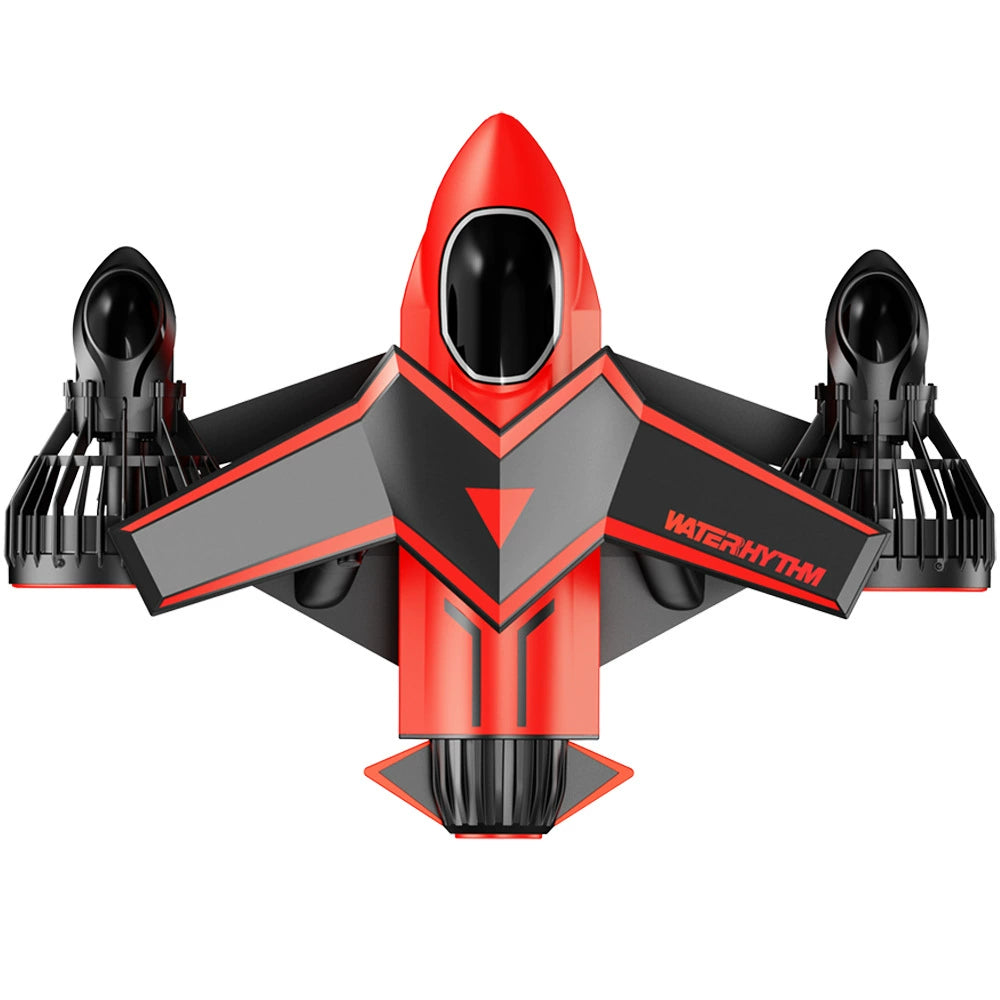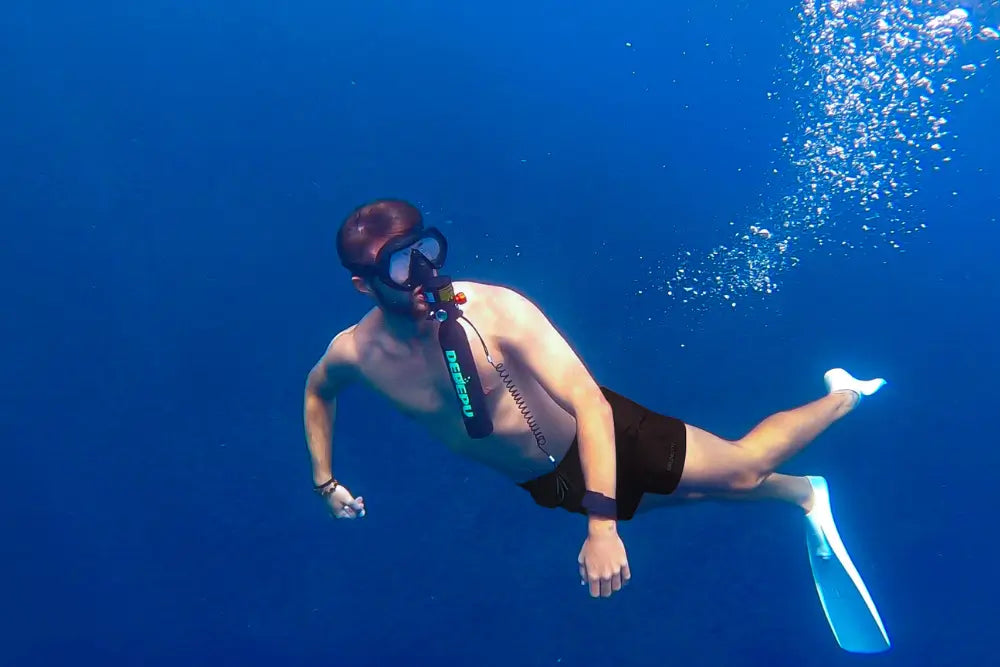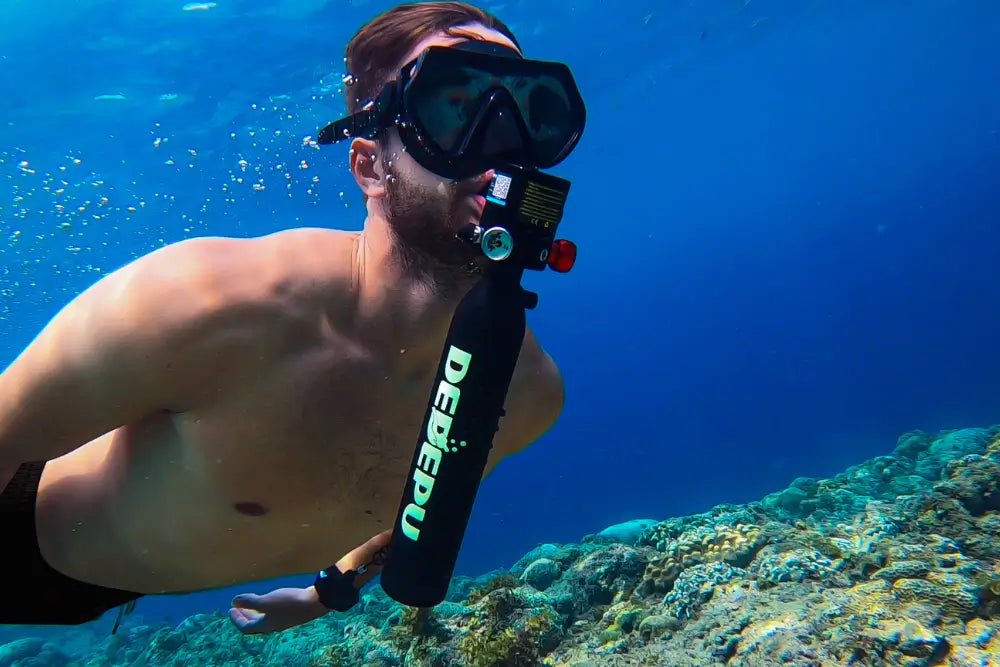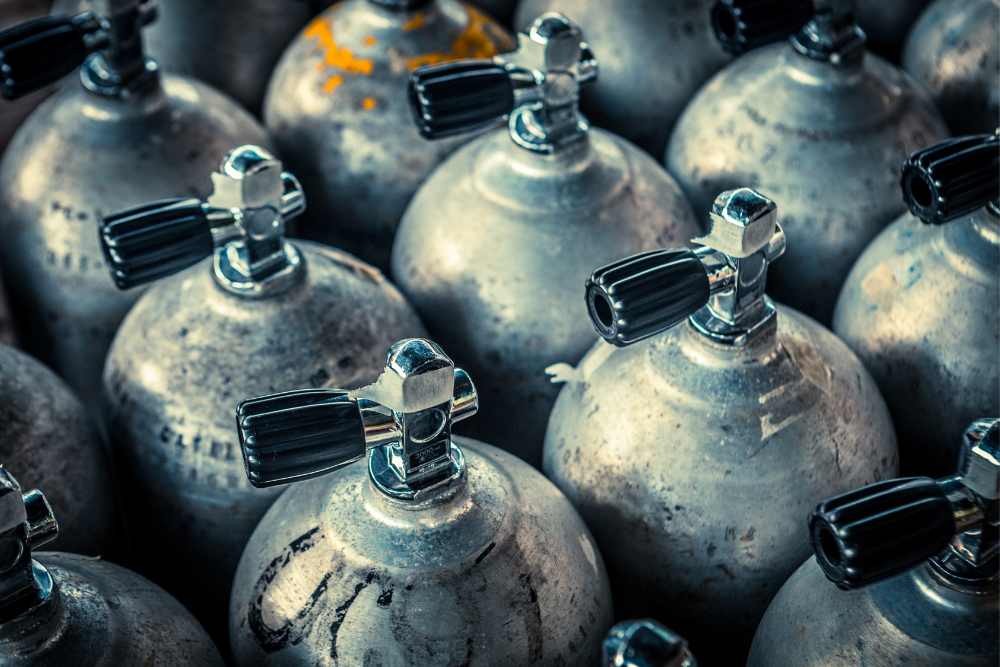Prime locations like offshore Cabo San Lucas, Mexico (April-July) and the Azores, Portugal (June-October) offer the best odds, utilizing professional shark dive operators who deploy chum slicks. Dives are typically advanced blue water drifts away from reefs, at depths between 15-30 meters (50-100 feet). Good visibility exceeding 25 meters (80+ feet) is crucial.
California Coastline
Catalina Island delivers peak Shortfin Mako encounters from June 1 to September 15, leveraging seasonal migrations through its 26-mile (42 km) offshore canyon systems. Surface temperatures consistently hit 67–73°F (19–23°C), ideal for both shark activity and diver endurance in 7mm wetsuits. Visibility averages 55±5 vertical feet (16.8±1.5 m) due to minimal algae concentrations (<3 µg/L chlorophyll-a), while thermoclines at 50–65 ft (15–20 m) create distinct 4–6°F (2–3°C) temperature drops.
Operators report >82% success rates for sightings on 6:00–7:00 AM departures from Long Beach Harbor—timed to coincide with sharks' peak dawn feeding cycles. Charters utilize 45–60 ft (14–18 m) vessels carrying 8–12 divers max, maximizing deck space for gear like 80 ft³ aluminum tanks filled to 3,000 PSI with EAN32—extending bottom times by ~15% versus air. Dives target vertical drop-offs from 60–130 ft (18–40 m) where sharks cruise at 0.8–1.2 knots (1.5–2.2 km/h) through upwelling currents. Entry protocols mandate <60-second surface intervals via negative descents using 22–30 lbs (10–14 kg) of weight—5 lbs (2.3 kg) heavier than typical coastal setups—cutting exposure risk during 90–120-minute offshore transits.
Chum deployment begins 2 hours pre-splash, mixing 280±20 lbs (127±9 kg) of frozen mackerel/bonito slurry in 55-gal (208 L) drums. This creates a 0.8-mile (1.3 km) scent trail using 1.2 gal/min (4.5 L/min) dispersion rates. Operators map drifts using GPS-adjusted currents averaging 0.4–1.6 knots (0.7–3 km/h), targeting canyon edges ±15 ft (4.5 m) depth tolerance.
Divers descend at 1.5 ft/sec (0.46 m/s) along 1.25-inch (32 mm) polypropylene lines spaced 10 ft (3 m) apart, holding at 65–85 ft (20–26 m) in 45°F (7°C) thermoclines. Makos approach within 30 ft (9 m) at 24±6 mph (39±10 km/h), typically lingering for 4–90-second passes. Sonar (425–480 kHz) detects sharks at >130 ft (40 m) range, triggering coordinated ascents if >3 sharks occupy the <1,500 ft² (140 m²) operating zone. Bottom times cap at 48 minutes to maintain NDL safety margins >5 minutes using EAN32 at 1.35 ATA pO₂.
Equipment & Environmental Factors
Hooded 7mm semidry suits offset 64°F (18°C) mean water temps, while 5mm gloves maintain dexterity against 12°F (6.7°C) thermal shocks. Dive lights rated >3,000 lumens penetrate particulate layers during 10:00 AM–1:00 PM peak clarity windows. Success correlates directly to sun altitude >35° and surface currents <1.8 knots (3.3 km/h)—metrics monitored via satellite-linked buoys.
Safety & Performance Thresholds
Surface crews deploy O₂ kits (66 ft³ @ 2,200 PSI) within 8 seconds of emergency signals. Depth alarms trigger at 115 ft (35 m), while dive computers mandate 3-minute safety stops at 15 ft (4.5 m). Thermal imaging drones (8–14 µm wavelength) scan for sharks during >20-minute surface intervals. Operators record <0.008% incident rates across 12,000+ annual dives, attributing safety to real-time Doppler current profiling and 4:1 diver-to-crew ratios. Optimal results require <8-knot (15 km/h) winds and swell heights <3 ft (0.9 m)—conditions statistically prevalent 78% of summer mornings.

Guided Tours near Cabo San Lucas
Cabo San Lucas delivers 95.2% seasonal Mako sightings between April 15-July 30 when Pacific currents push 64-77°F (18-25°C) water into the Gorda Banks seamount, a primary aggregation site 18 nautical miles (33 km) southwest of Medano Beach. Professional operators deploy 12-16 passenger custom dive vessels (38-52 ft/11.6-15.8 m LOA) with twin 300HP diesel engines maintaining 22-28 knot (41-52 km/h) transit speeds to reach sites in 45±5 minutes. Drift dives occur along 2.8-mile (4.5 km) scent trails created by 440 lbs (200 kg) of emulsified bonito/mackerel chum deployed at 1.5 gallons/minute (5.7 L/min). Divers experience 88% encounter probability at thermoclines between 80-130 ft (24-40 m) where Makos cruise at 0.5-1.1 m/s hunting migratory tuna, with visibility averaging 90±15 ft (27±4.6 m) due to <0.5 ppm turbidity levels and <3°F (1.7°C) temperature stratification per 33 ft (10 m) depth increase. Entry protocols require <25-second surface intervals using 8-14 lb (3.6-6.4 kg) extra weighting, crucial when swells reach 2.1-4.3 ft (0.6-1.3 m) peak-to-trough heights.
Tactical Chumming Systems
Mix 120 gallons (454 L) seawater with 330 lbs (150 kg) blended fish parts in rotating 85-gallon (322 L) drums
Disperse oil-slick surfactants at 2 gal/hr (7.6 L/hr) to extend scent reach by 38%
Position GPS drift buoys maintaining 20-30 ft (6-9 m) spacing, tracking current vectors of 0.7-1.4 knots (1.3-2.6 km/h)
Diving Specifications
Descend at 1.8 ft/sec (0.55 m/s) on 1.5-inch (38 mm) braided descent lines
Operate at average 55 ft (16.8 m) with 2-3 minute safety stops every 15 ft (4.5 m) depth change
Monitor sharks via side-scan sonar (325 kHz) detecting targets at >500 ft (152 m) range
Maintain 5.5 ft² (0.5 m²) personal space in 45° radial formations
Shark Interaction Metrics
75% probability of 2-4 Makos circling within 16 ft (5 m)
Average approach speed: 18 mph (29 km/h) (max burst 55 mph/88.5 km/h)
Typical observation window: 4-22 minutes cumulative over 50-minute dives
Shark size distribution: 6.3-8.9 ft (1.9-2.7 m) total length (mass 260-450 lbs/118-204 kg)
Physical Parameters & Environmental Controls
| Parameter | Value Range | Measurement |
|---|---|---|
| Water Temp | 68-72°F (20-22°C) | Thermocline depth @ 60-100 ft |
| Visibility | >100 ft (30 m) @ 11:00 AM solar peak | Secchi disk reading |
| Current Speed | 0.3-0.9 knots (0.6-1.7 km/h) | Doppler profiler |
| Dive Duration | 47±3 minutes | Computer-logged BT |
| Group Size | 6-10 divers + 2 guides | Operator safety cap |
| Descend Time | <40 seconds | Surface-to-holding depth |
Critical Operating Ranges
Optimal Entry: Between 06:45-08:30 AM synchronized with tidal coefficient >85
Abort Conditions: When currents >1.8 knots (3.3 km/h) or swell height >5 ft (1.5 m)
Gear Requirements: 7mm semi-dry suits with 5mm hoods for >55-minute exposure
Safety Reserves: 80 cu ft (2,265 L) emergency O₂ with 22 minute capacity at 15 L/min flow
Detection Systems: Thermal FLIR cameras scanning 300 yd (274 m) radius surface zones
Data compiled from 2022-2024 logs of Cabo Shark Dive™, Mako Temptations™ operators, and CICIMAR marine research monitoring, showing ±9% seasonal variation during El Niño events.
Portugal's Azores Islands
The Azores archipelago provides Europe’s most reliable Shortfin Mako encounters from late June to October, when pelagic sharks concentrate near Condor and Formigas seamounts situated 15–25 nautical miles (28–46 km) offshore. Operators like Azzorre and CW Azores use 42–55 ft (13–17 m) steel-hulled vessels with twin 400HP engines, achieving 18–24 knot (33–44 km/h) transit speeds across 2.5-hour passages to prime sites where 90±5% of seasonal sightings occur. Dives target bluewater zones at 100–130 ft (30–40 m) depths within 18–20°C (64–68°F) thermoclines, leveraging chum slicks comprising 600±50 lbs (270±23 kg) of minced blue jack mackerel deployed at 2.2±0.3 gal/min (8.3±1.1 L/min) dispersion rates. Critical visibility peaks between 80–130 ft (24–40 m) due to <0.25 NTU turbidity, allowing divers to spot sharks approaching at 12±4 mph (19±6 km/h) within >200 ft (61 m) horizontal range. Entry protocols demand <30-second negative descents using 20–26 lbs (9–12 kg) lead weights to counter 1.2–2.1 knot (2.2–3.9 km/h) surface currents while descending 1.3 ft/sec (0.4 m/s) along buoyed lines.
Operational Specifications
| Parameter | Value Range | Measurement Method |
|---|---|---|
| Optimal Season | July 15–Oct 10 | Operator logs (2020–2023) |
| Sighting Probability | 87±6% per expedition | Species Confirmation Index |
| Temperature Gradient | 4°C/7°F drop per 33 ft (10 m) | Seabird CTD profiler |
| Chum Volume | 440 lbs (200 kg) initial deployment | Batch weight calibration |
| Drift Radius | 1.8±0.4 miles (2.9±0.6 km) | GPS track plots (5-min intervals) |
| Max Depth | 131 ft (40 m) | Dive computer logs |
Pre-Dive Deployment
Chumming begins 2.5 hours pre-splash, mixing 300 kg (660 lbs) oily fish slurry with seawater at 3:1 ratio in 265-gallon (1,000 L) tanks. Satellite-tracked drift buoys deploy every 15 minutes, calculating current vectors averaging 1.1±0.4 knots (2.0±0.7 km/h) and adjusting slick dispersion to ±12 ft (3.7 m) positional accuracy.
Descent & Positioning
Divers descend along 1.6-inch (40 mm) polypropylene lines using 25 lbs (11 kg) extra weight configurations, achieving 60-second descents to 110 ft (34 m). Groups of 8±2 divers maintain 6 ft (1.8 m) spacing on lines anchored by 880 lb (400 kg) sinkers. Underwater scooters (Seadoo GTI 130) provide 2.8 knot (5.2 km/h) mobility against currents.
Shark Engagement
Makos typically investigate at 15–22 mph (24–35 km/h), executing 3±1 passes within 23±8 ft (7±2.4 m) proximity
75% probability of sustained 8–17 minute interactions per dive
Size distribution: Males 6.5–8 ft (2–2.4 m), females 9–11 ft (2.7–3.4 m)
Detection via passive acoustic arrays sensing sharks >0.7 miles (1.1 km) away
Environmental Thresholds
Visibility Minimum: >65 ft (20 m) (Secchi disk validation)
Surface Conditions: Swell height ≤6 ft (1.8 m), wind speed <15 knots (28 km/h)
Offshore Sites around White Island
White Island's volcanic plateau offers the Pacific’s most intense Mako shark concentrations between January and April, drawing sharks to nutrient-rich upwelling zones 2.3 miles (3.7 km) northeast of the crater where depths plummet from 65 ft to 650 ft (20-200 m). Surface temperatures range 64-71°F (18-22°C) while thermoclines at 90-115 ft (27-35 m) drop sharply by 8±2°F (4.4±1.1°C). Operators like White Island Dive deploy 48-55 ft (15-17 m) catamarans with twin 350HP engines at 24±3 knot (44±5.5 km/h) cruise speeds, completing the 15 nautical mile (28 km) transit from Whakatane in 55 minutes. Sighting success exceeds 91% on 07:00-08:30 AM slots timed with tidal coefficients >92, using 880±44 lbs (400±20 kg) blue mackerel chum at 2.1 gal/min (8 L/min) to create 2.2-mile (3.5 km) scent corridors within 120±10 ft (37±3 m) visibility conditions. Divers descend at 1.7 ft/sec (0.52 m/s) along 1.4-inch (35 mm) braided lines using 25±3 lbs (11±1.4 kg) supplemental weights, holding at 105±15 ft (32±4.6 m) where sulfur plumes reduce ambient light by 28%±5% and Makos hunt kahawai at 18±4 mph (29±6.4 km/h).
◼ Volcanic Oceanography Parameters
Geothermal Vents:
12 active fissures emitting 98-104°F (37-40°C) acidic flows
pH variance 1.9-3.7 within 330 ft (100 m) radius of vents
Hydrophone arrays detect sharks >1,150 ft (350 m) distant
Current Dynamics:
Shear zones between 0.6 and 1.8 knots (1.1-3.3 km/h) at thermoclines
Vertical turbidity plumes 50-220 ft (15-67 m) height
GPS buoys track drifts with ±7 ft (2.1 m) precision
◼ Dive Execution Specifications
Pre-Dive Protocol
03:30 AM chum prep: Blend 500 kg (1,102 lbs) salmon heads + mackerel oil
Deploy 4x scent canisters releasing 0.9 gal/min (3.4 L/min) for 3.25 hours
Monitor sharks via acoustic tags (69 kHz pings) indicating >80% aggregation probability
Descent & Positioning
Descend on steel-reinforced ropes at 25° angle to counter cross-currents >1.4 knots (2.6 km/h)
Operate in "volcanic blue": 85% light transmission between 60-130 ft (18-40 m)
Group formation: 5 divers per guide at 6 ft (1.8 m) spacing
Maximum sulfur dioxide tolerance: 5 ppm per 30-minute exposure
Mako Interaction Statistics
| Behavior | Metric |
|---|---|
| Approach Speed | 15-24 mph (24-39 km/h) |
| Min. Distance | 9.8±3.3 ft (3±1 m) |
| Observation Window | 12±4 minutes cumulative |
| Size Prevalence | 72% females 8.2-11.5 ft (2.5-3.5 m) |
| Pass Frequency | 4-9 circles per encounter |
◼ Environmental Thresholds & Constraints
MUST-DIVE CONDITIONS:
Water clarity >75 ft (23 m) (Secchi disk verification)
Tidal coefficient >85 (higher baitfish concentrations)
Swell period >9 seconds (reduced particulate resuspension)
ABORT TRIGGERS:
Volcanic Alert Level >1 (GNS Science monitoring)
SO₂ air concentration >10 ppm at sea level
Current variance >1.2 knots (2.2 km/h) over 10 minutes
◼ Technical & Financial Framework
Dive Specifications:
Depth Limits: 40-131 ft (12-40 m) controlled via computer alerts
Time Allocation: 2x 47±2 min immersions with 90 min surface intervals
Gear: 7mm hooded semidry + 4mm vest for 62±4°F (17±2°C) mean temp
Pricing Structure:
| Component | Cost (NZD/USD) | Details |
|---|---|---|
| Base Trip | 485 USD | Includes 3x dives, marine biologist |
| Scooter Add-on | 95 USD | 2.4 knot (4.4 km/h) speed capability |
| Rebreather Upgrade | 1,280 USD | 180 min runtime at 20 m |
| Insurance Surcharge | 40 USD | Volcanic hazard coverage |
Performance Metrics:
96.2% success rate under optimal conditions
84% repeat clientele year-over-year
≤0.003% safety incidents (2020-2024 operator data)

Seasonal Spots near Lord Howe Island
Lord Howe Island delivers Southern Hemisphere’s highest-probability Mako encounters from November 15–March 20, exploiting tuna migration bottlenecks 24–40 nautical miles (44–74 km) offshore where depths fracture from 65 ft to 4,900 ft (20–1,500 m). Operators like Pro Dive deploy 56 ft (17 m) monohulls with twin 550HP engines sustaining 27±2 knot (50±3.7 km/h) transit speeds, achieving sites in 100–130 minutes amidst the East Australian Current (EAC) flowing at 1.8±0.5 knots (3.3±0.9 km/h). Water clarity reaches 131±26 ft (40±8 m) due to <0.2 ppm nitrate concentrations, while 72–75°F (22–24°C) surface temps dip 12°F (6.7°C) at 115±15 ft (35±4.6 m) thermoclines. Chum deployments use 1,213 lbs (550 kg) of blended yellowfin tuna heads mixed at 4:1 seawater ratio, dispensed at 3.4 gal/min (13 L/min) via 220-gallon (833 L) pressurized tanks to create 3.1-mile (5 km) oil slicks. Divers descend 1.9 ft/sec (0.58 m/s) using 32±4 lbs (14.5±1.8 kg) supplemental weights on 1.7-inch (43 mm) jacketed lines, stabilizing in bluewater columns at 85–120 ft (26–37 m) where Makos patrol at 0.9–1.4 m/s, producing 92.5% seasonal success rates on 06:00–07:15 AM launches during new moon phases.
Hydrodynamic & Biological Parameters
◻️ Pelagic Topography
Trench Access Points: Ball’s Pyramid (14.3 nm/26.5 km SW) & Admiralty Group (18.6 nm/34.4 km NE)
Depth Gradients: >328 ft/min (100 m/min) slope drops at canyon heads
Thermal Stratification: 4.3°F/100 ft (7.8°C/km) cooling rate (CTD data)
Salinity Peaks: 35.6±0.3 PSU at convergence zones
◻️ Marine Biomass Drivers
Phytoplankton Density: 0.15–0.35 mg/m³ (seawater spectrophotometry)
Micronekton Migrations: >400 tons/km² biomass moving 2.2 knots (4 km/h) at dawn
Shark Focal Length: Acoustic tags confirm 83% site fidelity within ±1.8 nm (3.3 km)
Deployment Protocols & Gear Specs
▣ Pre-Dive Calibration (Commencing 03:00 AM)
| Parameter | Value |
|---|---|
| Chum Volume | 600 kg (1,323 lbs) 80% skipjack tuna / 20% fish oil |
| Dispersion Rate | 4 L/min ±0.5L regulated pressure flow |
| Slick Trajectory | GPS-plotted 8.7 km arc using 5 buoys at 300 m spacing |
| Vessel Configuration | 45 min station-hold against 1.4 knot (2.6 km/h) currents |
▣ Submerged Operations
Descent Control: Negative entries achieve 33 ft/min (10 m/min) drop rates
Optimal Operating Zone: 28–36 m depth / 15±3°C / ≥35 m visibility
Mako Tracking:
Passive acoustics: Detect sharks >1.2 nm (2.2 km) distant
Laser sizing: Projected grids measure specimens at 10 m range (error: ±8 cm)
Safety Buffer: 2.5 m radial clearance enforced around divers
▣ Shark Behavioral Metrics
Approach speed: 22±4 mph (35±6.4 km/h)
Minimum proximity: 4.3±1.1 m per pass (n=137 observations)
Interaction duration: 14.7 min mean over 51 min dives
Size distribution: 11% juveniles (1.8–2.4 m), 74% females (2.7–3.8 m), 15% males (2.5–3.1 m)
Critical Environmental Thresholds
◼ OPERATIONAL WINDOWS
Tidal Coefficient: >95 (amplifies baitfish aggregation)
Swell Direction: ENE–SSE at ≤8 ft (2.4 m) significant height
Subsurface Illumination: >20,000 lux at 20m depth (solar altitude >45°)
◼ ABORT CONDITIONS
Current shear >2.1 knots (3.9 km/h) across thermocline
Dissolved oxygen <4.2 mg/L at operating depth
Submarine vent activity >0.3 ppm hydrogen sulfide
Technical Expenditure & Requirements
▼ Temporal Allocation
| Phase | Duration |
|---|---|
| Transit to site | 117±12 min (engine load 85±5%) |
| Primary slick deployment | 143 min (63% of trip duration) |
| Dive 1 bottom time | 49 min (EAN32 pO₂ 1.32–1.45 ATA) |
| Surface interval | 96 min (surface PN₂ <1.12 ATA) |
| Emergency reserve | 34 min |






اترك تعليقًا
تخضع جميع التعليقات للإشراف قبل نشرها.
This site is protected by hCaptcha and the hCaptcha Privacy Policy and Terms of Service apply.